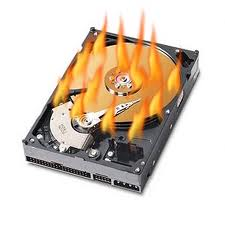
 |
How To Backup Your Computer |
Backups are ImportantUsing backup software to make backup copies of all your important data is one of those tasks that most computer users never get around to. Figuring out how to use backup software just seems too boring. That is until something goes wrong and suddenly all those important documents you were working on can't be accessed any more. All too often, people only learn about the need to backup their data after they have lost a large portion of it due to a hardware failure. It will Happen To You!Unfortunately, computer components, like all other machines, do eventually wear out. While components like the CPU (central processing unit) and the computers memory can last for many decades, hard drives are precision mechanical instruments and usually have life-spans of around five years, though this can vary considerably. Even if your disks never fail (and they will) what about you? Have you ever accidentally deleted something and then realised you needed it? Most people have, after all, that is why you can open the recycle bin in Windows and retrieve things you deleted! In short, there's no escaping it, if you store valuable data on your computer then you are going to have to backup that data. Planning Your Backup StrategyWhile using Windows backup software isn't too complicated, understanding what to backup often is. This problem isn't helped by the fact that Windows is a complex operating system that stores potentially important data in many different places. There are all kinds of Windows backup software available but before you rush out and buy a cutting edge backup solution, you should carefully consider your needs. Consider the data on your computer, we can split it roughly into two categories: Programs - These are the things you install and run on your computer. They include word processors, web browsers, games, music players and anything and everything that runs on your computer. Data - This is information that programs work with. It includes word processor documents, spreadsheets, music and video files, digital photographs, saved game positions and anything and everything that the programs you run on your computer work with. It is possible to make a complete copy of your hard drive. Making a complete copy of your hard drive (called a "hard drive image" or "hard drive snapshot") does have some advantages. In the event of a failure, this type of backup can have you up and running again in minutes rather than hours or even days. Doing a complete copy of your hard dive also makes sure that every piece of data (valuable or useless) is saved.When performing a restore from a hard drive it restores every file, program and Windows setting to the exact state when the backup was created. This can be very useful if your computer becomes infected with a virus. After deciding what to backup, you need to decide which media to store your backup data to and how to go about backing it up. The next part of the guide will discuss the different types of storage media you can use when backing up data. click the link below to go to the next part of the guide. |


|